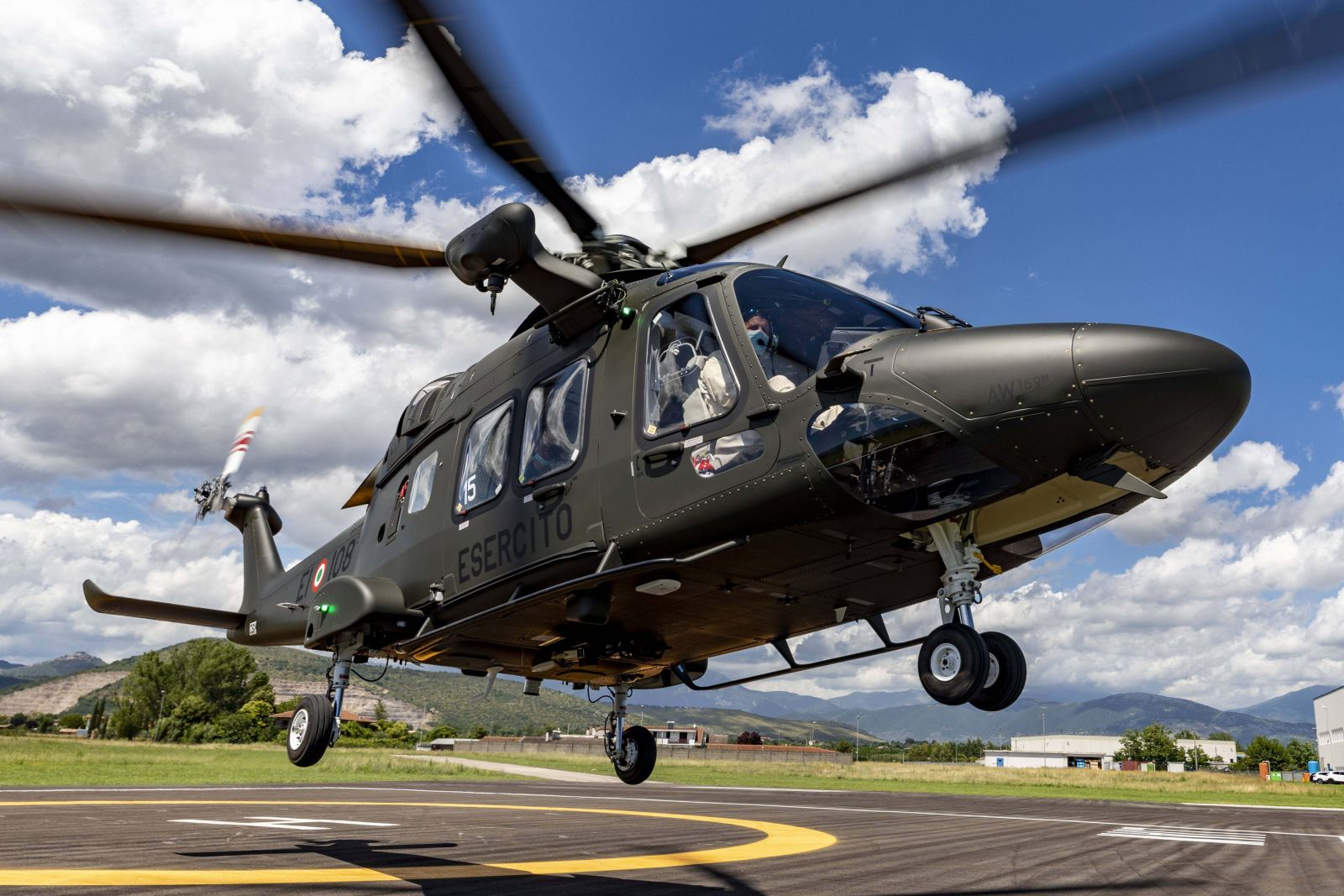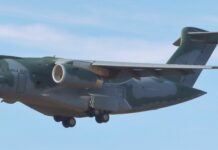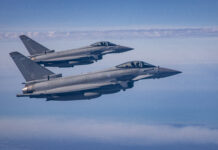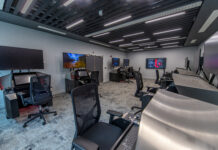In May 2022, a weekly magazine claimed it had insight into a new Austrian MoD
“Strategy Paper 2032+”, drafted after the shock of Putin’s invasion of Ukraine – a battlefield in a country only a five-hour drive from Vienna. What is known from this – officially not disclaimed – document, might mark a significant reversal regarding the national defence of the NATO-embedded neutral nation.
In 2002, it was a surprise to EADS (now AIRBUS D&S), when their new European EF-2000 TYPHOON was selected by a centre right government in Vienna in a deal worth €2Bn for 24 aircraft. Officers still stress to the author that the brave attempt to replace the 24 used 1960s-era Saab S-35OE Mk-2 DRAKEN aircraft with a solution for the next 30 years, was made on the grounds of the most promising option with the most potential (versus the offered GRIPEN-C/Ds which were too expensive in comparison).
TYPHOON Shockwaves Still Today
Thus, the Tranche-2 was ordered by the launch-export customer in good faith, even as this standard was to expected be agreed by NETMA and the industry only late in 2004. The first six aircraft were accepted as Tranche-1, to be upgraded or replaced later. This should never have happened. Six of the interceptors were soon cancelled to compensate the expenses incurred to cover floods later the same year, despite the fact that it was agreed to only pay in installments from 2007. Another three were then cut by the new Social Democrat Defense Minister Darabos, whose party had promised to cancel the whole deal – but legally couldn’t get out of the deal. What he did instead was to mutilate the 15 remaining aircraft (now only Tranche-1 single-seaters, with six of them being used German LWs with up to ~400 hours) on their PIRATE-IRST, with the DASS self defence kit and the type‘s main AIM-120-BVR-armament. In July, the first of these downgraded TYPHOONs landed at Zeltweg Air Base. Despite numerous allegations and three parliamentary investigations, no corruption involving politicians and officers was found, though financial irregularities in connection to the alleged 200 per cent offsets are still being investigated today.
Continuing Controversy
Despite an upgrade to software standard SRP 4.3 to use T2 drop-tanks, the ongoing integration of IFF-Mode-5 and a minor upgrade of the MIDS (datalink) interface-unit together with Italy’s T1s, the actual combat effectiveness of the 15 Austrian TYPHOONs has remained unchanged from their controversial acquisition in 2003 until today. Next to the 27 mm guns, which are today only seen in single examples from a total of about 20 analog-only integrated IRIS-T WVRAAMs mounted in daytime QRA. There is still no 24/7 QRA, prompting the UK Defence Attaché recently to ask the author why this has not been addressed. The simple answer was the same as to why there were no upgrades carried out after 15 years of limited but uneventful service without any loss: Not so much a question of funds in fact, but political neglect, with nothing to be gained from this subject in elections, in addition to wicked studies issued by the MoD which sought to research how neutral Austria could be through breaking free from this expensive equipment burden and hand over the whole task to its neighbours, NATO, or whomever. – Another bizarre episode in this saga relates to a 2020 letter from Indonesia’s MoD, expressing interest in acquiring Austria’s unwanted 15 ’ducklings‘ – but with no replacement in sight whatsoever. As an Indonesian Air Force officer expressed to the author in 2021: “What should we do in our security environment with your emptied birds, with no self-defence and even RWR, no BVR-missile and – above all – no two-seater?”
War in Ukraine Triggers a U-Turn
Since the Russian aggression against Ukraine, there have been different comments in Austrian politics and media in reaction to the conflict. Nothing much about the announcement to raise the meagre annual defence budget from 0.7 per cent BIP (€2.7Bn) to 1 per cent (€4Bn) or even 1.5 per cent and the establishment of a reconstruction fund for defence of €10Bn was heard in detail so far. There is, however, a clear trend to end the careless and sloppy approach regarding the Bundesheer. The old Russian (Ukrainian) supersonic recce-UAV which recently flew across NATO-Hungarian airspace before landing in Zagreb provoked considerable interest, since if Austrian territory should – as opposed to NATO-bound Finland and Sweden – have been affected, or threatened by war, it would first and foremost be its airspace. And so the author has seen planning documents showing a 180° turn regarding the approach to Austrian airpower. Now all the capabilities mutilated in the past – like the PIRATE ISR or other features such as the DASS self-defense or which AIM-120 version would be still available for T1 aircraft – should return in the next years, together with 3 or 4 used two-seaters from the German inventory. Moreover, considerations have begun about what – in the light of expected increasing running costs for T1 – should follow in the 2030s. And also in Austria – we have been looking on at Finland and Switzerland with interest – with an F-35 quietly mentioned.
Proficiency and Costs
This is the environment in which about 16 Austrian supersonic pilots are fulfilling daily air-policing duties – so far, with no losses or larger mishaps. But there is an uneasy expectation among them as expressed to the author in October, about the replacement pipeline now undergoing pilot training in Italy and Germany and whether or not they will possess the necessary proficiency and situation awareness levels, since one can no longer accumulate enough hours, because the 50 year-old Saab-105OEs were – justifiably – retired at the end of 2020 but with no replacement. After phase-II on PC-7Mk.1, the few students head to Lecce/Deci (IT) and Laage-Rostock (GER) for almost three years to earn their wings on the MB-339C/D, T.346 Master (later maybe also the T.345HET) and finally – reportedly prohibitively expensive per hour – some hours on German TYPHOON two-seaters of JG 73. Upon return, they will have never flown in an Austrian Squadron’s routine with phraseology, topography, meteorology etc. And the abovementioned ‘Strategy Paper 2032’ also marks a U-turn here, since it calls for a squadron of advanced jet trainers, preferably – as the author has learned – the Leonardo M346FA. This also would envisage the provision of a ten-times less expensive training platform at home without the need to spend millions abroad anymore. But also as a substitute for air surveillance in TRA-events like covering summits (such as the WEF in Davos etc.) and as a sparring partner and modern target for the GBAD-troops.
Some numbers in brief: In 2020, a total of 13 candidates successfully completed the aviation assessment centre, of which seven then passed the practical aeronautical aptitude test and were admitted to pilot training out of a total of 500 candidates who were earlier tested as fit-to-fly. “Then the four-year military pilot training begins, which costs several million euros per student and in which we practically no longer have any dropouts. And that is absolutely unique in Europe”, Gen. Kraft, as head of the Air- and Air Defence school points out.
Golden Hat
Also being addressed and currently under discussion is the lack of special or critical ground personnel such as radar officers, Mil-ATC, fire brigade personnel, etc. thereby hampering the build-up of a 24/7 QRA capability over the next 3 to 4 years. On the contrary, the technical upgrade of the three highly self-sufficient stationary Alenia RAT-31DL radar stations at Kolomansberg (Salzburg), Großer Speikkogel (Carinthia) and Steinmandl (Lower Austria) of the ‘Goldhaube’ military airspace surveillance system is proceeding well, with the high elevated sensors looking from Kaiserslautern, over the southern regions of Poland down to Sarajevo. Of course, they would need to be supplemented by some kind of passive sensors, since in a conflict, these would be the first assets to be taken out by an aggressor.
Rotary Renewal
The nine existing Austrian S-70A42 BLACK HAWKs helicopters are currently equipped with new cockpits and mission computers, installed by the US-provider ACE-AERONAUTICS, and the air support wing will also receive three more S-70 aircraft by 2025. The Austrian Armed Forces are meanwhile setting another milestone with the G2G-procurement launched with Italy in late 2021 of six Leonardo AW169B helicopters for rotary training and 12 AW169M as multi-mission platforms. These will succeed the ALOUETTE-III liaison and transport helicopters that have been in use for decades. The AW169 system is larger, offers much more functionality and thus opens up completely new application possibilities for the troops. Among other things, this has to do with the additional equipment packages supplied by Leonardo, which also enable the use of the – partly weaponised – 18 platforms for special forces, SAR, and recce etc. The IOCs and FOCs for these roles/equipment configurations will run until 2025/26. The first ‘B’ should land at the end of the year, while an option for a further 18 AW169 units is valid also until then, with the hope for a decision to also replace the 23 1980s-era AGUSTA AB.212s of which only half are still operational.
Airlift Renewal Pending
Since 2003/2004, the air support wing in Linz/Hörsching is operating three ex-RAF C-130K aircraft, built in 1967 and 1968. A fourth ex-RAF airframe was flown to Linz on its last flight and is used as a training airframe. A working group at the strategy planning cell in the MoD was created last year to address the replacement. High-ranking AF officers informed the author that this could be either newly-built or – depending on the condition – used C-130Js like those being phased out by the RAF, or the Brazilian EMBRAER (K)C-390. Austrian PANDUR EVO APCs easily fits as well as a domestically designed Austrian MEDEVAC/intensive care container. The 390 is acquired in the EU by neighbouring Hungary and also by Portugal. The latter now hosts the Austrian C-130 for all future MRO-events at the OGMA-plant in Alverca, partly owned by EMBRAER. Moreover, AAF sources claim that the shift to OGMA was induced since Marshall Aerospace at Cambridge would – maybe due to Brexit – have had dictated prices while not being held to timelines.












